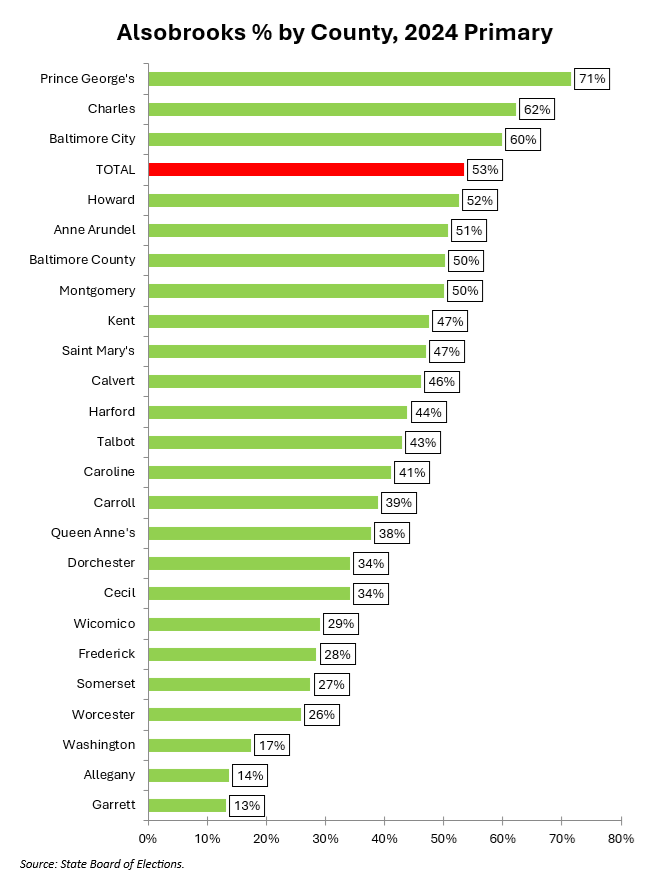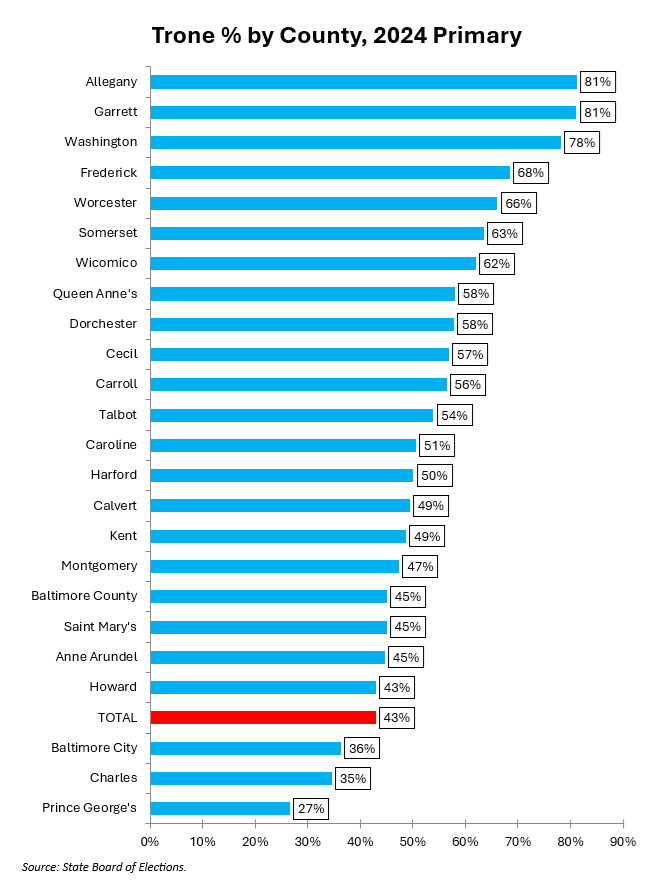By Adam Pagnucco.
The U.S. Senate Democratic primary between Prince George’s County Executive Angela Alsobrooks and Congressman David Trone will go down as one of the most remarkable – and expensive – races in Maryland’s recent history. The State Board of Elections has released precinct data for the 2024 primary that enables detailed geographic analysis of the election. I have previously used this data to analyze turnout patterns in Montgomery County. Let’s look more closely at the U.S. Senate contest.
Before delving into what happened in MoCo, let’s set our county in the statewide context. Alsobrooks won 53.4% of the statewide vote, defeating Trone’s 42.8%. The chart below shows Alsobrooks’s vote percentage by county.

There are no surprises here. Alsobrooks’s best county was her own – Prince George’s – followed by two heavily Black jurisdictions (Baltimore City and Charles County). She won all the major jurisdictions in or near the Baltimore-Washington corridor. The greater the distance from that corridor, the worse her performance became.
Now let’s look at Trone’s percentage by county.

Again, there are no surprises. Trone’s top four jurisdictions are the Western Maryland counties he represented in Congress. He also won the Eastern Shore. However, his losses in most of the state’s most heavily populated areas cost him.
The chart below shows Alsobrooks’s percentage margin over Trone by county.

This chart mirrors Alsobrooks’s win percentage. She was strongest in heavily Black jurisdictions, won the Baltimore-Washington corridor and trailed everywhere else. This is what we would expect to see from a Democrat in a general election.
Alsobrooks won the state by 10.6 points and won Montgomery County by 2.7 points. While her MoCo margin is smaller than her state margin, let’s remember that MoCo is Trone’s home county. He has represented a big chunk of it in Congress and his broadcast TV commercials have blanketed the county in every election cycle since 2016. Trone’s failure to win his own county is one of the biggest stories of the primary. We will begin exploring what happened in greater detail in Part Two.
